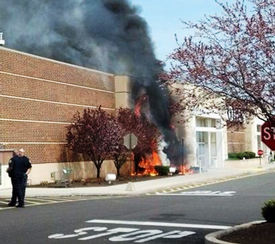Let’s end 2014 and start 2015 on a fun note. I have realized recently that I know many
people who studied architecture and changed career paths. I wonder whether the curriculum that those
people share with me has had any influence on their alternative career. My friend George Costanza likes to say, “Nothing
is higher than architect”. I wondered if
that was true…
Was it the curriculum that made them decided to change their
careers? Or had their career been
augmented by the architectural curriculum?
I have compiled a list of famous people who have in one way or another
studied architecture prior to embarking on an alternative career path. Some of these I had heard about, others were
a surprise. What would have happened to
some of these people had they stayed in this/my profession?
2. Jimmy Stewart.
Graduated from Princeton in 1932.
His thesis was on an airport, but he joined an acting troupe rather than
an architect’s firm. Oh, he was also a Major General in the Air Force and a combat
pilot in WWII. Boy do I feel like an underachiever.
3. Saul Steinberg.
A cartoonist for the New Yorker, he has had his degree from Politecnico di Milano. He was born in Italy and left right before
WWII.
4. John Denver.
Rocky Mountain High singer dropped out of architecture school at Texas
Tech.
5. Roger Waters and Nick Mason. Neither of these founding members of Pink
Floyd could read music. They had their
own technique that was more of an “architectural diagram” than traditional
notes. Before dropping out to form the
band, they had composed music in conjunction with studio projects. Nick Mason received an honorary degree 50
years later from London Polytechnic.
6. Chris Lowe.
Another Londoner drop out, this time from University of Liverpool. This
Pet Shop Boys singer had stage design for the group done by Zaha Hadid in 2000.
7. Jeff Carlisi.
Another musician; he earned his degree during a recession. He took some time to “hang out” with .38
Special. He continues to Hold On Loosely.
8. Aishwarya Rai.
This Miss World 1994 winner is a Bollywood actress as well. She gave up architectural pursuits and
dropped out of Raheja College of Arts to pursue her modeling career.
9. Art Garfunkel.
The harmonizing half of Simon and Garfunkel changed his major at
Columbia. He has a B.A. in Art History,
not music, and a Masters in Mathematics.
He was married briefly to an architect in the 1970’s.
10. Anthony
Quinn. This two time Oscar winner dropped
out of a Taliesin Fellowship after winning a contest to study there after high
school. On FLW’s recommendation, he enrolled
in speech therapy, attended acting school and the rest is history.
11. David
Byrne. My generation of architecture students
loved to play this one up. He left a
Bauhaus program at RISD and went on to the University of CBGB. I don’t know if that is technically
architecture school, but it is my list and I am keeping him. He has done a Ted Talk about how architecture
has helped music evolve.
12. Seal. The guy who married Heidi Klum has an
Associate’s Degree and worked in London for a time in the business.
13. Lisa
Halaby. Better known as Queen Noor of
Jordan. Not sure if anyone trumps that
career upgrade. She had quite an architectural
resume and was the Director of Facilities and Design for Jordanian Airlines
when she met King Hussein of Jordan.
14. Thomas
Jefferson. Architecture was always part
of his life and study. He had a pretty
good run in politics though.
15. George
Takei. Yeeeeeessss. Sulu had 2 years at U of Cal, Berkeley in
architecture before changing to theater.
So there you have it.
The result of far too many hours of research tied up in a list of 15
names. What if Weird Al had stayed with architecture? Would he have gotten the Guggenheim work?
Did I miss any good ones?
Please comment with any adds!






.jpg)












































